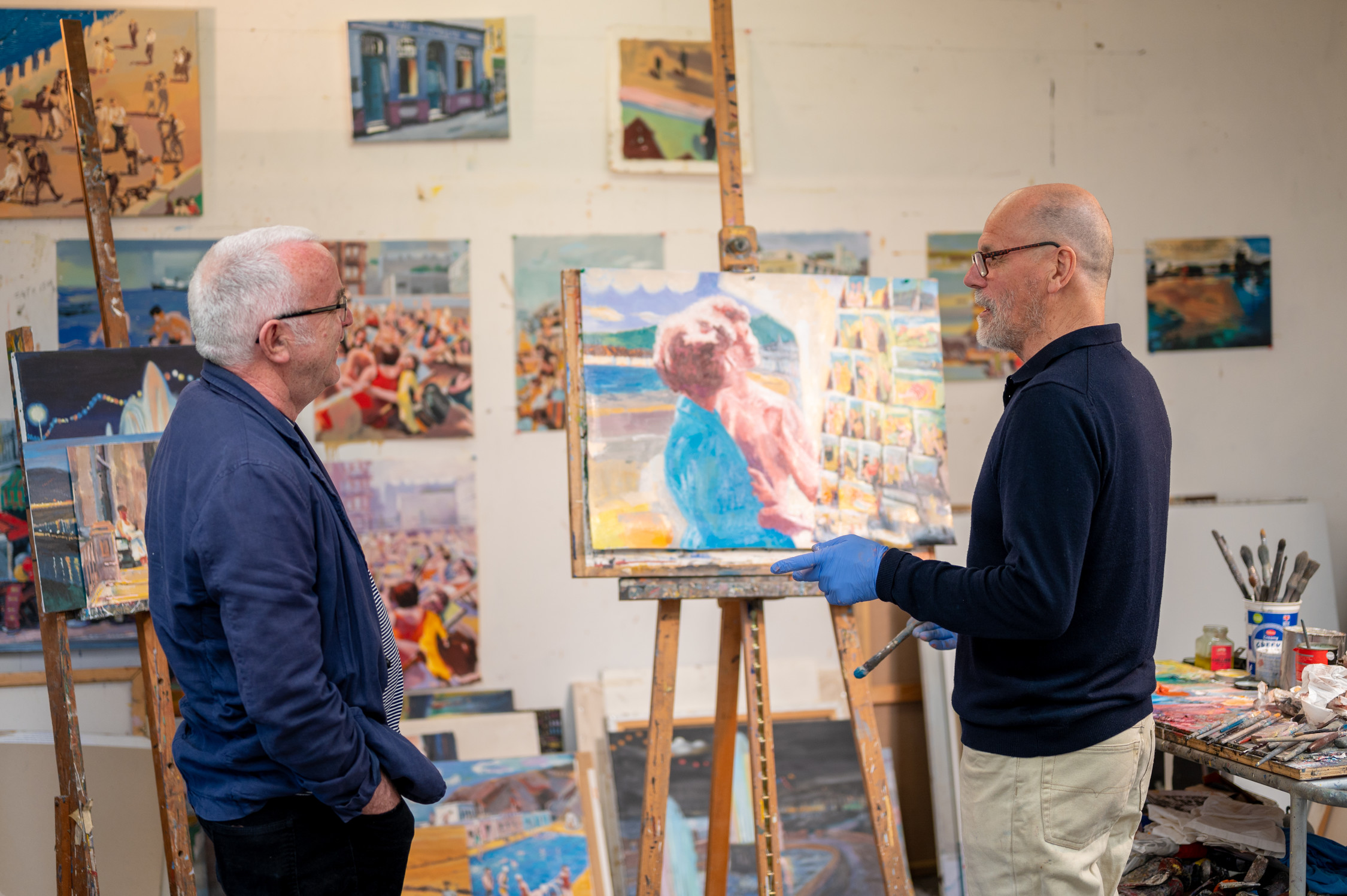Why creativity matters more as we age than ever before
By AAG member Dr Tricia King from the School of Business and Creative Industries at the University of the Sunshine Coast

You might have tucked away in a box (or even on display on a wall) a scribbled drawing done by your child or another younger person in your life, handed to you with all the bursting pride they felt in their creation. Their creativity was supported, encouraged, seen as critical to their development and it made them feel so very proud and accomplished. It was treasured.
As we get older, this scribble, photograph or poem is no longer celebrated as a shiny beacon of our wellbeing. Rather, these activities are often seen as frivolous and not connected to our health. However, creativity and the act of creating are very important … perhaps even more so as we age than before.
Creativity can help us to connect, feel, empathise, think, and be. It helps us build healthy development, encourages happiness, connects us to place and supports our sense of self. The act of making art, in whatever form, can help our minds as we create and our body as we use the dexterity to hold a brush or to dance in our chairs. And so, this transformative power of the arts is intrinsically linked to our overall health and wellbeing.
Arts health programs which promote creative practices can positively influence and support clinical care methods by fostering cognitive resilience, brain vitality, giving purpose and expression. Most importantly, they give us pleasure.
The National Arts Health Framework broadly defines arts and health as ‘the practice of applying arts initiatives to health problems and health promoting settings.’ We are now seeing a range of ways the arts can be used in health settings and with older adults as they age, from dancing to promote connection and movement for people with Parkinson’s Disease to writing poetry to express emotions and lived experiences, and everything in between.
Creativity is able to inspire ways of thinking as well as ways of doing, allowing creativity to be applied to a range of different models which can intersect with our health and wellbeing.
Many arts-inspired projects are designed to foster socialisation and connection, drawing groups of older people together to share experiences and co-produce and collaborate on projects to provide new pathways of connecting socially.
Creativity is so valuable across a range of psychosocial measures, there is much support to suggest that arts health projects should ‘become an integral, prominent part of ageing policy and embedded in everyday care practice’[1], and there are many examples where arts health agendas have been built into national policy.[2]
As advocates, researchers, supporters and caregivers, we should recognise and support the role that arts can play in the lives of older people. Please encourage your organisation or workplace to look for creative ways to engage the people you support, explore the impactful ways arts-based approaches can be used in your work, and advocate for the value of art in ageing research, policy and practice.
If you would like to know more about using creative methods to positively transform the experience of ageing:
- Join AAG’s new Creativity, Art, and Design (CAD) in Ageing special interest group
- Attend the upcoming Ageing, Art and Creativity one-day symposium on the Sunshine Coast to hear from national and international researchers, practitioners, advocates and service providers about a range of creative projects and experience the hands on workshops throughout the day.
Contact Tricia at: [email protected]
[1] Cann, P. (2016). ‘Something to get out of bed for’: Creative arts for a happily ageing population. Working with Older People, 20(4), 190-194. [2] Dow, R., Warran, K., Letrondo, P., and Fancourt, D. (2023) The arts in public health policy: progress and opportunities. Health Policy. 8(2), E155-E160.
This blog is also available as a pdf.